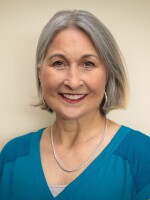Two Jacksonville Public Library employees are hoping to help blind patrons feel more secure about visiting the building’s restrooms.
Imagine going into a public bathroom, and you don’t know where the soap dispensers or the stalls are. Elisha Zuaro of St. Augustine can identify with that. She’s without sight and has to use her hearing to figure things out.
“I try to walk in and listen to see, ‘OK, let me hear where the sink is, where someone’s running water—or I listen for the toilets’ flushing; you know, to kind of orient myself.”
Sometimes, people living with blindness resort to feeling their way around, an unappetizing thought in a public restroom. But two library employees hope to prevent that. Chris Eaton and Luis Terrone made a 3-D miniature restroom blueprint that’s mounted at the men’s and women’s restroom entrances.
The idea began at the library’s 10th anniversary celebration, where there was a 3-D printing demonstration. Visitors from Florida State College at Jacksonville's Vision Education & Rehabilitation Center told special-needs librarian Eaton that perhaps the printer could create a floor-plan map of the restrooms.
Eaton consulted Luis Terrone of the library’s E-services department, who showed off the model at a recent Braille competition.
“3-D printing, it’s all about proto-typing, and this is the proto-type of the bathroom," he explained.
For visually impaired restroom users, feeling the model tells them where the sinks and handicapped stalls are. Future iterations could even have tiny stall doors to show which way they open.
“Now, with it being a teeny door, because of its usage in a public place, thousands of hands will touch this. So, right now it's PLA plastic, which is a biodegradeable plastic,” Eaton says.
He says the plastic model is just another bit of information the library is giving people.
"We’d like to see it happen all over our public buildings. The applications for 3-D printing are limitless," he says. "This is a good start and should this be something the city wishes to pursue as part of our commitment to ADA accessibility in public buildings.”

Eaton says he hasn't seen anything like it made from a 3-D printer and would like to see the idea go nationwide.
Elisha Zuaro says it helps her feel more confident and like her sighted peers.
"I’ve not experienced one of these models before, and I really appreciate it. You know, there’s nothing worse than feeling insecure about going to the bathroom,” she says.
The library is considering making a stainless steel version that would be more clean and sturdy.


